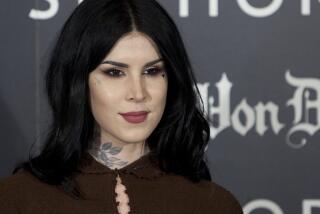Mistrial Is Declared in Art Forgery Case : Courts: Jury deadlocks on charges against a man who copied paintings by prominent artists. He denies conspiring to pass off the fakes as authentic.
- Share via
A mistrial was declared Monday after Los Angeles Superior Court jurors failed to reach a verdict in the conspiracy and forgery case of a man described by prosecutors as the largest creator of fraudulent artworks on the West Coast.
Anthony Gene Tetro, 41, of Claremont, was accused of conspiring with art dealer Mark Sawicki to defraud gallery owners in Los Angeles, New York, Illinois and Florida by selling them phony watercolors, paintings and lithographs purporting to be authentic pieces by Norman Rockwell, Marc Chagall, Joan Miro and Hiro Yamagata.
In addition to conspiracy, Tetro was charged with 67 counts of forgery.
Jurors in the monthlong trial deliberated 17 hours before informing Judge John Henning that they were deadlocked. Tetro’s attorney, Jay J. Tanenbaum, said the panel took at least three ballots before giving up.
“Obviously, I’m very sorry that the jurors could not agree on a verdict,” Deputy Dist. Atty. Reva Goetz said. “But my confidence in the case remains.”
The prosecutor said she hoped to retry the case. Henning ordered Tetro, who is free on $10,000 bail, to return to court July 1 for further motions.
A self-taught artist with a fondness for Rolls-Royces and Ferraris, Tetro acknowledged copying the works and signatures of famous artists, but he testified that he did not know that Sawicki, formerly the owner of a Sherman Oaks gallery, was selling the pieces as authentic. In order to convict, jurors would have had to conclude that Tetro intended to commit fraud.
Sawicki, 31, of Agoura, who pleaded guilty in March, 1990, to three counts of grand theft, agreed to cooperate with authorities and testified that he did $75,000 to $100,000 worth of business a year with Tetro between 1984 and 1989.
Trying to show that Tetro did not conspire with Sawicki, Tanenbaum contended that the dealer paid Tetro a “nominal sum” of $300 to $500 for each piece of art and later sold the works for much higher prices, ranging from $1,500 to $7,500. As part of his deal with prosecutors, Sawicki received three years’ probation and a two-year suspended prison sentence.
Prosecutors relied heavily on an audiotape of a conversation between Tetro and Sawicki, who was wearing a recording device. On the tape, Tetro is heard saying, “I did a Chagall.” Later he answered “yeah” when asked if he had other fake Chagalls “in the works.”
Goetz said some jurors “felt that (the tape) was not as clear as they would have liked.”
Filed two years ago amid great fanfare, the cases against Sawicki and Tetro were billed as as the beginning of a widespread crackdown on fake art. But so far, only one unrelated case has resulted in a conviction. A year ago, French art broker Frank DeMarigny pleaded no contest to eight counts of grand theft, forgery and perjury. He has completed his prison sentence, Goetz said.
In September, 1989, police conducted a highly publicized raid against the Beverly Hills branch of the Upstairs Gallery and confiscated 1,600 lithographs. The former manager of the gallery was arrested but the criminal case against him was dismissed.
The now-defunct gallery was never charged with wrongdoing. Instead, it has been named as a victim in a criminal case filed against its supplier, Larry Groeger, who is awaiting trial.
Earlier this year, the Federal Trade Commission won a civil judgment against Pierre Marcand, a Beverly-Hills based art publisher, who was accused of selling 22,000 fraudulent prints, primarily by Salvador Dali. The case has been appealed.
More to Read
The biggest entertainment stories
Get our big stories about Hollywood, film, television, music, arts, culture and more right in your inbox as soon as they publish.
You may occasionally receive promotional content from the Los Angeles Times.










